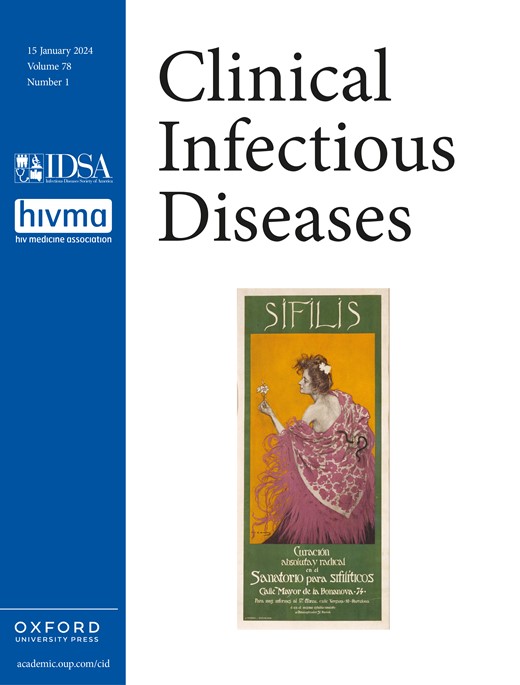Nasopharyngeal microbiota in South African infants with lower respiratory tract infection: a nested case-control study of the Drakenstein Child Health Study
IF 8.2
1区 医学
Q1 IMMUNOLOGY
引用次数: 0
Abstract
Background Lower respiratory tract infections (LRTI) in infants are commonly caused by viral and bacterial infections, alone or in combination. We investigated associations between LRTI and infant nasopharyngeal (NP) viruses and bacteria in South African infants. Methods In a case-control study of infants enrolled in a birth cohort, LRTI cases were identified prospectively and age-matched with controls. NP swabs were tested using quantitative real-time polymerase chain reaction and 16S rRNA gene amplicon sequencing. We calculated adjusted Conditional Odds Ratios (aORs) and used mixed effects models to identify differentially abundant taxa and explore viral-bacterial interactions. Results Samples from a total of 444 LRTI episodes and 444 matched control timepoints were tested. Respiratory Syncytial Virus (RSV) [aOR: 5.69, 95%CI 3.03-10.69], human rhinovirus (HRV) [1.47, 1.03-2.09], parainfluenza virus [3.46, 1.64-7.26], adenovirus [1.99, 1.08-3.68], enterovirus [2.32, 1.20-4.46], Haemophilus influenzae [1.72, 1.25-2.37], Klebsiella pneumoniae [2.66, 1.59-4.46], and high-density Streptococcus pneumoniae [1.53, 1.01-2.32] were associated with LRTI. LRTI was associated with decreased relative abundance of Dolosigranulum (q=0.001), Corynebacterium (q=0.091) and Neisseria (q=0.004). In samples positive for RSV, Staphylococcus and Alloprevotella relative abundance was higher in controls compared to cases. In samples positive for parainfluenza virus or HRV, Haemophilus relative abundance was higher in cases. Detection of CMV in controls was associated with reduced Corynebacterium, Dolosigranulum and Staphylococcus. Conclusions The associations between bacterial taxa and viruses and LRTI are similar to those from high-income countries. Haemophilus is a major bacterial driver of LRTI, acting synergistically with viruses. Dolosigranulum and Corynebacteria may reduce LRTI risk, while Staphylococcus may reduce the risk of RSV-related LRTI. CMV infection is associated with a dysbiotic nasopharyngeal microbiota.南非下呼吸道感染婴儿的鼻咽微生物群:德拉肯斯坦儿童健康研究的巢式病例对照研究
背景:婴儿下呼吸道感染(LRTI)通常是由病毒和细菌感染单独或联合引起的。我们调查了南非婴儿LRTI与婴儿鼻咽病毒和细菌之间的关系。方法在一项纳入出生队列的婴儿病例对照研究中,前瞻性地确定下呼吸道感染病例,并与对照组年龄匹配。采用实时定量聚合酶链反应和16S rRNA基因扩增子测序对NP拭子进行检测。我们计算了调整后的条件优势比(aORs),并使用混合效应模型来识别差异丰富的分类群并探索病毒-细菌相互作用。结果共检测了444例LRTI发作和444例匹配对照时间点的样本。呼吸道合胞病毒(RSV) [aOR: 5.69, 95%CI 3.03-10.69]、人鼻病毒(HRV)[1.47, 1.03-2.09]、副流感病毒[3.46,1.64-7.26]、腺病毒[1.99,1.08-3.68]、肠病毒[2.32,1.20-4.46]、流感嗜血杆菌[1.72,1.25-2.37]、肺炎克雷伯菌[2.66,1.59-4.46]、高密度肺炎链球菌[1.53,1.01-2.32]与LRTI相关。LRTI与Dolosigranulum (q=0.001)、棒状杆菌(q=0.091)和奈瑟菌(q=0.004)的相对丰度降低相关。在RSV阳性样本中,与病例相比,对照组中葡萄球菌和异丙沃氏菌的相对丰度更高。在副流感病毒或HRV阳性的样本中,嗜血杆菌的相对丰度较高。在对照组中,巨细胞病毒的检测与棒状杆菌、棒状杆菌和葡萄球菌的减少有关。结论细菌分类群和病毒与LRTI之间的关系与高收入国家相似。嗜血杆菌是LRTI的主要细菌驱动因素,与病毒协同作用。dolosgranulum和棒状杆菌可降低下呼吸道感染的风险,而葡萄球菌可降低rsv相关下呼吸道感染的风险。巨细胞病毒感染与鼻咽菌群失调有关。
本文章由计算机程序翻译,如有差异,请以英文原文为准。
求助全文
约1分钟内获得全文
求助全文
来源期刊

Clinical Infectious Diseases
医学-传染病学
CiteScore
25.00
自引率
2.50%
发文量
900
审稿时长
3 months
期刊介绍:
Clinical Infectious Diseases (CID) is dedicated to publishing original research, reviews, guidelines, and perspectives with the potential to reshape clinical practice, providing clinicians with valuable insights for patient care. CID comprehensively addresses the clinical presentation, diagnosis, treatment, and prevention of a wide spectrum of infectious diseases. The journal places a high priority on the assessment of current and innovative treatments, microbiology, immunology, and policies, ensuring relevance to patient care in its commitment to advancing the field of infectious diseases.
 求助内容:
求助内容: 应助结果提醒方式:
应助结果提醒方式:


